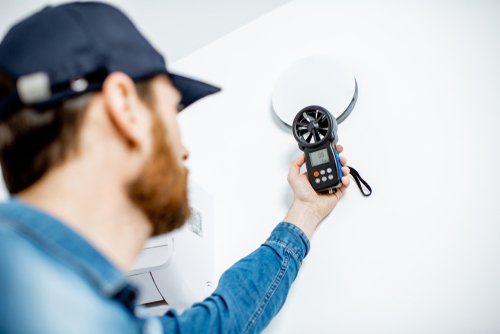Cold Rooms Fix: Balancing ducts and solving drafts

Picture this: it’s a chilly evening, your thermostat says 70, but that back bedroom feels like the inside of your freezer. You tug the blanket a little higher and wonder what’s going on. As local plumbing and home-comfort pros, we hear this story every winter. The good news is that a “cold room in winter” usually has a simple cause, and with a little detective work, you can get even heating without cranking the thermostat.
Why that one room stays cold
Uneven heating typically comes down to two things working against you at the same time: not enough warm air getting into the room and too much cold air sneaking in. On the supply side, ducts can be out of balance, partially closed, or leaking. On the draft side, tiny gaps around windows, doors, and attic hatches pull warm air away. Add a missing or undersized return air path and the room can’t circulate properly, so it never catches up.
Start with simple checks
Begin with the quick wins you can do in minutes. Make sure the supply register is fully open and not hidden behind a sofa or a heavy curtain. Pop in a clean furnace filter; a clogged filter chokes airflow to every room. Set your thermostat fan to “On” for a few hours to mix the air and see if the temperature evens out. While you’re there, do a quick “smoke pencil” test with an incense stick around window frames and door weatherstripping if the smoke wobbles or gets pulled, you’ve found a drafty spot.
Fast checks for uneven heating:
-
Open and clear all vents and returns
-
Replace the filter if it’s dirty
-
Try the thermostat fan on “On” temporarily
-
Look for obvious duct kinks or loose joints in the basement or attic
Balance the airflow
Balancing ducts sounds fancy, but it’s really a careful, patient process of directing the right amount of warm air where you need it. Many metal ducts have small handles near the takeoffs called balancing dampers. If a room is cold, you slightly close dampers feeding rooms that run hot and leave the cold room’s damper fully open. Give each change time to show results—about a day with normal use.
A simple three step balancing routine:
Mark current damper positions with a marker so you can undo changes.
Nudge warmer rooms a quarter turn toward closed, leave the cold room wide open.
Recheck in twenty four hours and repeat small adjustments until rooms are within a couple degrees.
If your ductwork doesn’t have dampers, you can still gain ground by sealing leaks. We recommend mastic paste or UL-listed foil tape on joints and seams—never cloth duct tape. A surprising amount of warm air is lost at leaky boots where ducts meet the floor register. Sealing those gaps, plus any obvious holes, protects the heat you paid for.

When to call a pro
Sometimes the fix needs professional tools. At Roto-Rooter Delmarva, we use thermal cameras to locate cold spots, a manometer to measure static pressure, and a duct blaster or smoke to reveal hidden duct leaks. If your home has an addition, a bonus room over the garage, or long duct runs through an unconditioned attic, we may recommend adding a return air grille, resizing a run, or installing a small ductless mini split to handle that stubborn area. We’ll also watch for common mistakes we see all the time, like closing too many supply registers, which raises system pressure and can actually reduce overall airflow.
